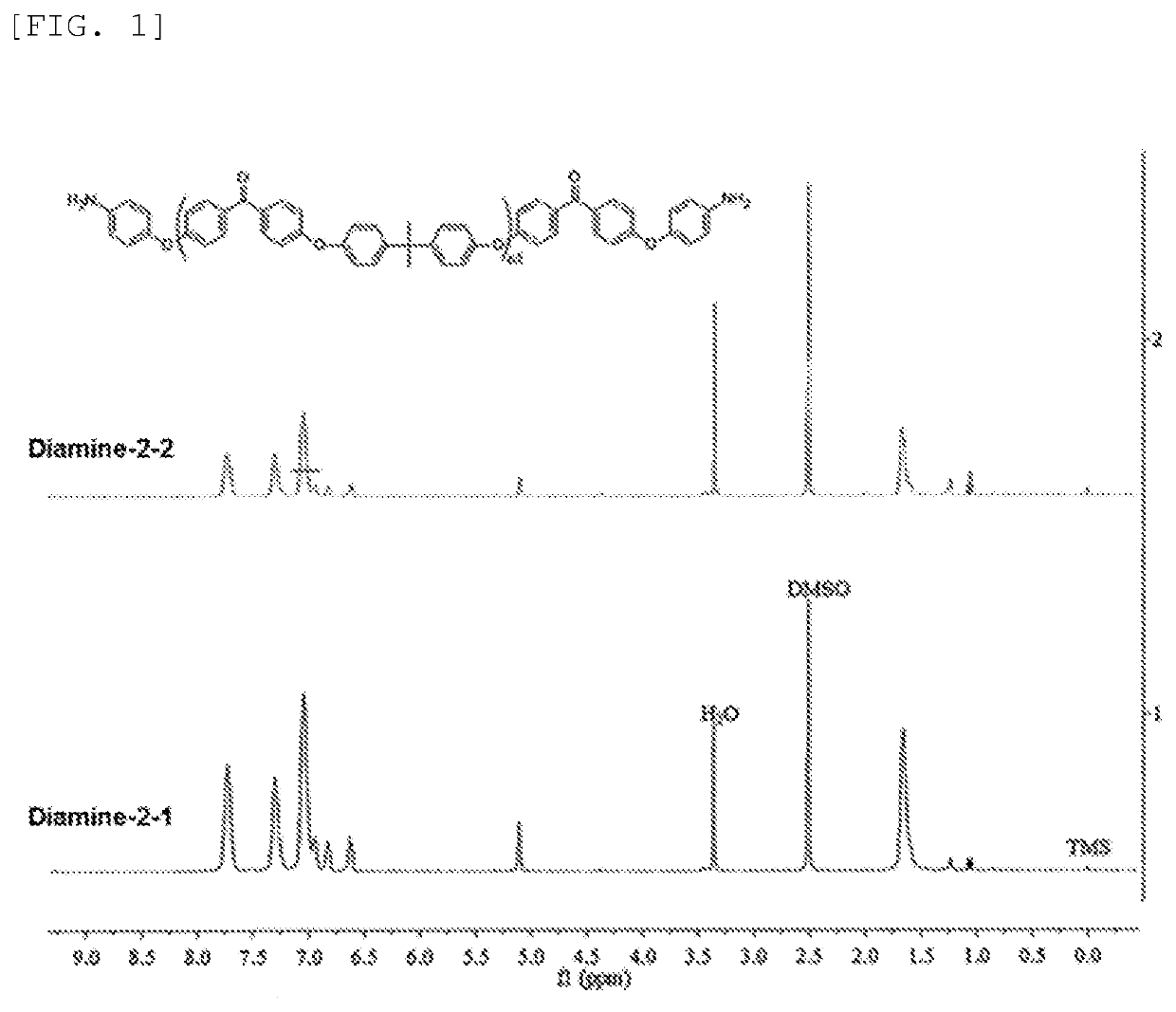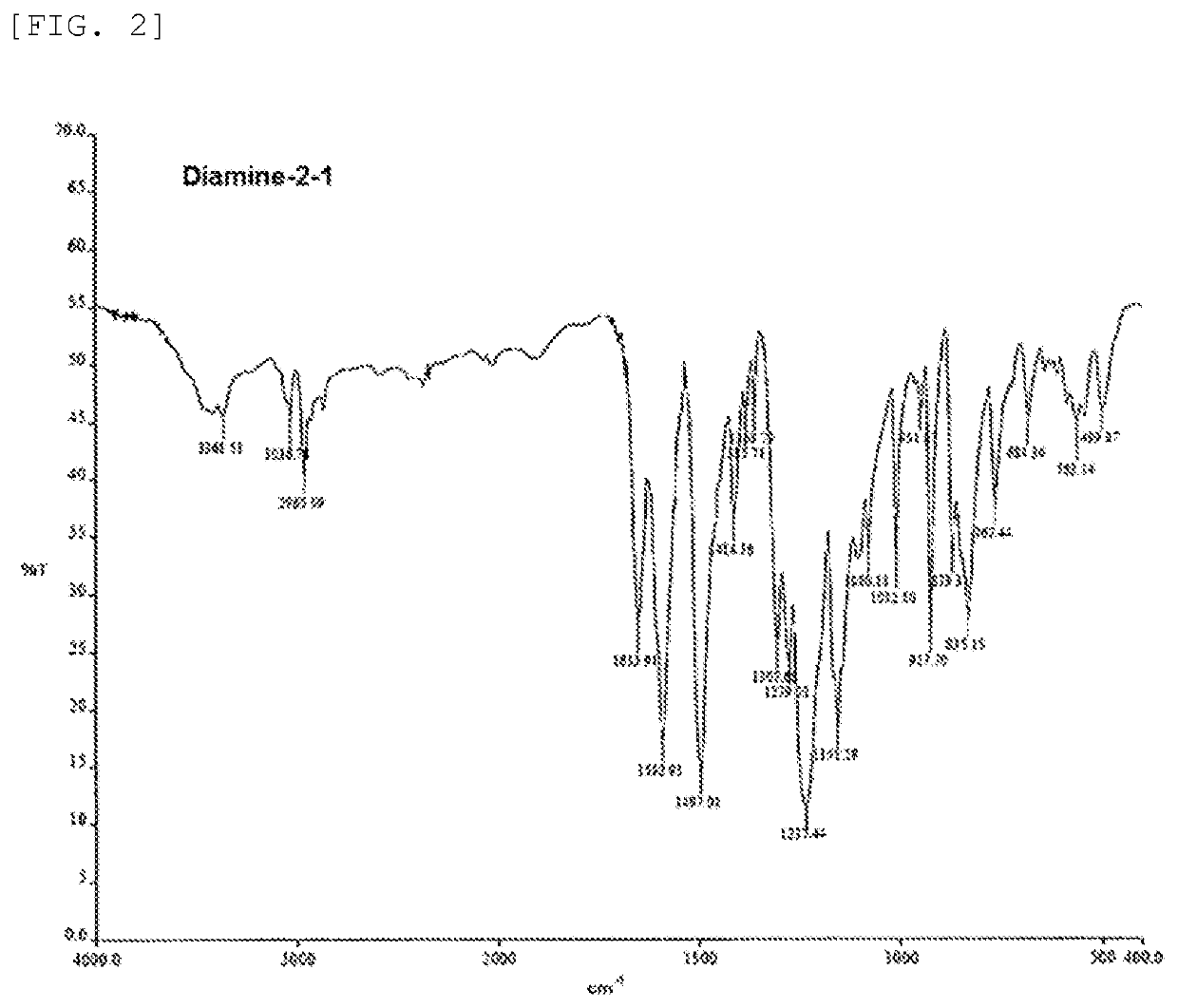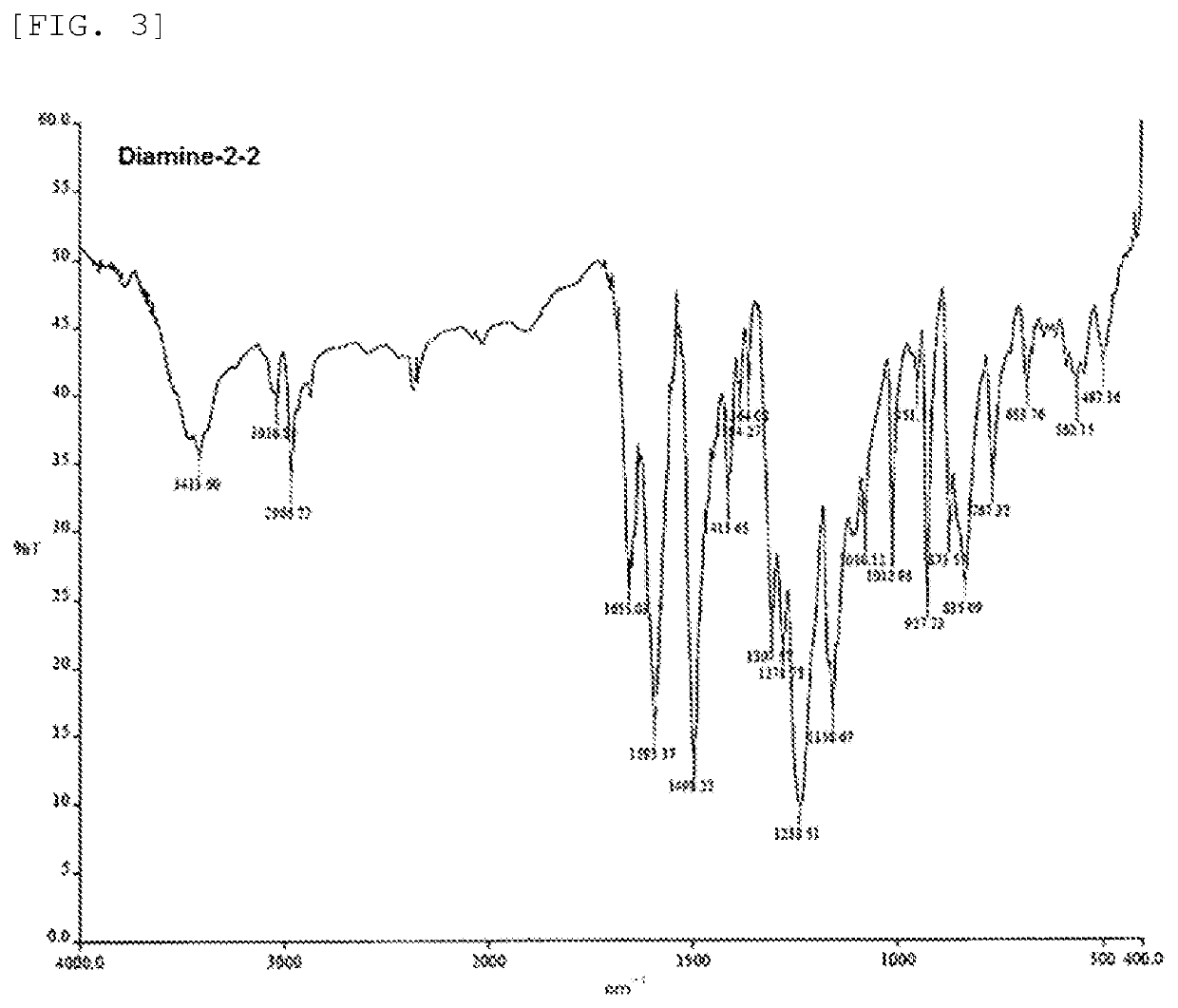Curable compound
a compound and compound technology, applied in the field of cureable compounds, can solve the problems of difficult melt molding, difficult to be used as matrix resins of fiber-reinforced composite materials, and soluble and hardly meltable, and achieve the effects of good solvent solubility, good dielectric properties, and good solvent solubility
- Summary
- Abstract
- Description
- Claims
- Application Information
AI Technical Summary
Benefits of technology
Problems solved by technology
Method used
Image
Examples
preparation example 1 (
Synthesis of Diamine-2-1)
[0171]Step 1: 6.865 g of 4,4′-difluorobenzophenone (4,4′-DFBP), 5.985 g of bisphenol A, 5.427 g of anhydrous potassium carbonate (K2CO3), 50 mL of N-methylpyrrolidone and 25 mL of toluene were charged in a 100-mL flask (three-necked) equipped with a stirring apparatus, a nitrogen introducing tube and Dean-Stark apparatus, and heated under stirring in a nitrogen atmosphere while toluene was refluxed at 130 to 140° C. for 4 hours. Thereafter, the resultant was further heated at 170 to 180° C. to distil away toluene. The resultant was continuously stirred at 170 to 180° C. for 10 hours, and thereafter returned to room temperature.
[0172]Step 2: 1.144 g of 4-aminophenol (4-AP), 1.447 g of anhydrous potassium carbonate, 5 mL of N-methylpyrrolidone and 25 mL of toluene were added to the flask in which a product obtained through step 1 was present, and again heated under stirring in a nitrogen atmosphere while toluene was refluxed at 130 to 140° C. for 3 hours. Ther...
preparation example 2 (
Synthesis of Diamine-2-2)
[0173]A powdery solid (Diamine-2-2, a compound represented by the above formula (6-1) wherein n1 was 9.7, yield: 95%) was obtained as in Preparation Example 1, except for, in step 1, altering the amount of 4,4′-difluorobenzophenone used to 6.586 g, the amount of bisphenol A used to 6.264 g and the amount of anhydrous potassium carbonate used to 5.680 g, and in step 2, altering the amount of 4-aminophenol used to 0.599 g, and the amount of anhydrous potassium carbonate used to 0.599 g.
preparation example 3 (
Synthesis of Diamine-1-1)
[0174]Step 1: 8.905 g of 4,4′-difluorobenzophenone, 3.745 g of resorcinol, 7.040 g of anhydrous potassium carbonate, 50 mL of N-methylpyrrolidone and 25 mL of toluene were charged in a 100-mL flask (three-necked) equipped with a stirring apparatus, a nitrogen introducing tube and a Dean-Stark apparatus, and heated under stirring in a nitrogen atmosphere while toluene was refluxed at 130 to 140° C. for 4 hours. Thereafter, the resultant was further heated at 170 to 180° C. to distil away toluene. The resultant was further continuously stirred at 170 to 180° C. for 10 hours, and thereafter returned to room temperature.
[0175]Step 2: 1.485 g of 4-aminophenol, 1.878 g of anhydrous potassium carbonate, 5 mL of N-methylpyrrolidone and 25 mL of toluene were added to the flask in which a product obtained through step 1 was present. The resultant was again heated under stirring in a nitrogen atmosphere while toluene was refluxed at 130 to 140° C. for 3 hours. Thereaft...
PUM
| Property | Measurement | Unit |
|---|---|---|
| temperature | aaaaa | aaaaa |
| exothermic peak temperature | aaaaa | aaaaa |
| exothermic peak temperature | aaaaa | aaaaa |
Abstract
Description
Claims
Application Information
 Login to View More
Login to View More - R&D
- Intellectual Property
- Life Sciences
- Materials
- Tech Scout
- Unparalleled Data Quality
- Higher Quality Content
- 60% Fewer Hallucinations
Browse by: Latest US Patents, China's latest patents, Technical Efficacy Thesaurus, Application Domain, Technology Topic, Popular Technical Reports.
© 2025 PatSnap. All rights reserved.Legal|Privacy policy|Modern Slavery Act Transparency Statement|Sitemap|About US| Contact US: help@patsnap.com



